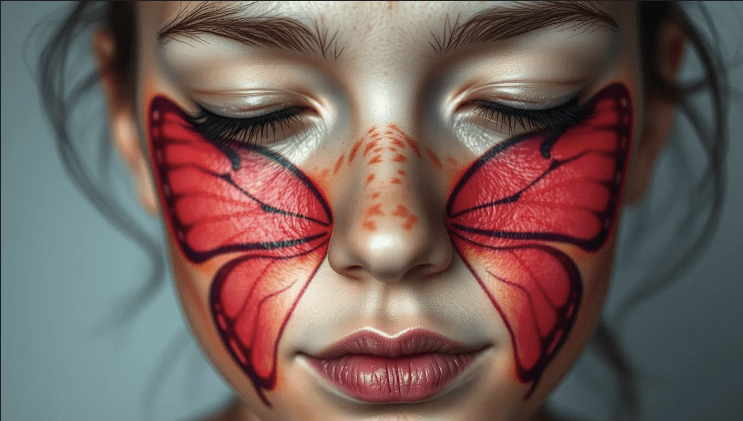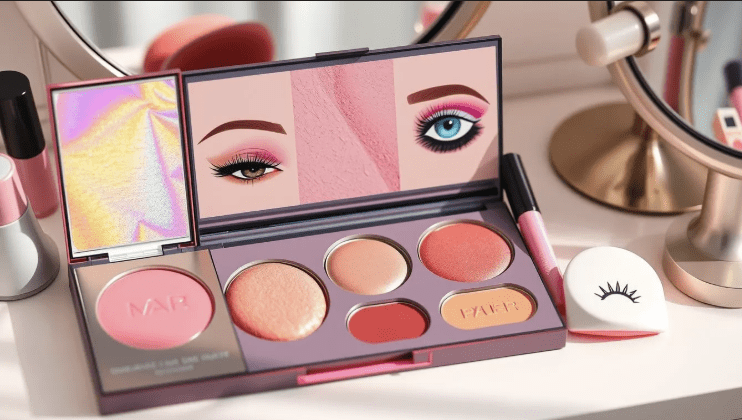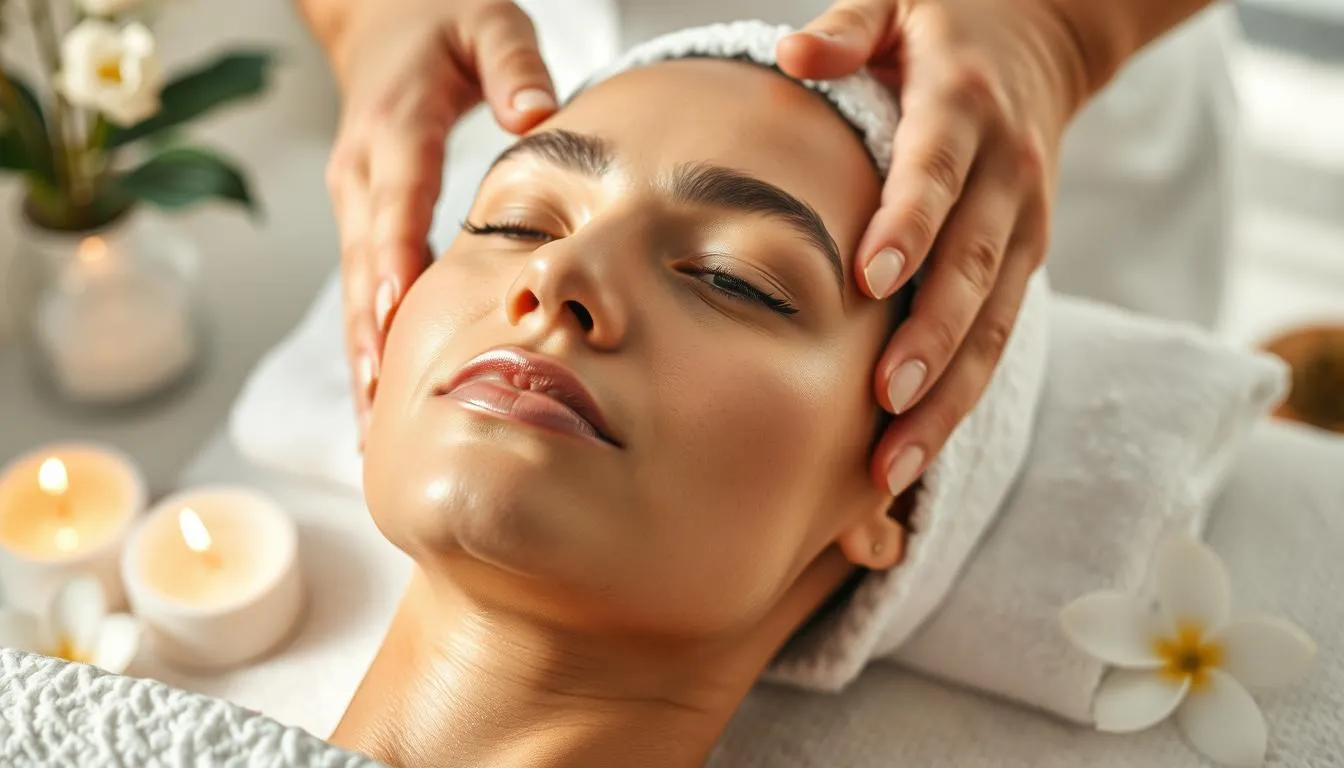Table of Contents
Have you ever seen a butterfly rash on someone’s face? It’s a common sight, but what causes it? A malar rash, or butterfly rash, shows up on the face. It can signal a bigger health issue.
We’ll look into what this rash looks like and where it usually shows up. This will help us understand it better.

So, what makes a butterfly rash appear on the face? We’ll explore this as we dive into malar rash. We’ll see how it’s linked to autoimmune diseases and the environment. Our aim is to give you a clear view of the butterfly rash on face and malar rash.
Key Takeaways
- A butterfly rash on face, also known as a malar rash, appears on the face and can be a symptom of an underlying condition.
- The rash has a characteristic appearance and pattern, commonly affecting the cheeks and nose.
- Malar rash can be caused by various factors, including autoimmune conditions and environmental factors.
- Understanding the causes and symptoms of a butterfly rash on face is critical for correct diagnosis and treatment.
- A malar rash can be a sign of a serious condition, like lupus.
- Spotting and treating a butterfly rash on face early can ease symptoms and prevent further issues.
What Is a Malar Rash/Butterfly Rash on Face?
A butterfly skin rash on the face, also known as a malar rash, affects the cheeks and nose. We will look into what it is, how it looks, and where it usually shows up.
The early stages of a butterfly rash on the face can worry people. It might signal an underlying condition like lupus. But, it’s also possible to have this rash without lupus. How long it lasts can differ from person to person.
Clinical Definition of Malar Rash
A malar rash is a skin issue often seen in people with lupus. But, it can happen to anyone. The rash is usually red or purple and looks like a butterfly on the cheeks and nose.
Characteristic Appearance and Pattern
The rash of a butterfly rash on the face is red or purple. It forms a butterfly shape over the cheeks and nose. It might be flat or raised and can itch or burn.
Common Areas Affected
The rash often hits the cheeks, nose, and forehead. Sometimes, it spreads to the chin or eyelids too. If you notice a butterfly rash on your face, see a doctor. Early treatment can help manage the condition and avoid complications.
We’ll keep exploring the link between butterfly rash and lupus. We’ll look at common causes and triggers next.
Also read this article : 7 Cute and best Makeup Trends 2025 for girls
The Connection Between Butterfly Rash and Lupus
A butterfly rash on the face is often linked to lupus, a chronic autoimmune disease. This rash is a common sign of lupus, showing up as a red, butterfly-shaped mark on the cheeks and nose. But is skin lupus serious? Can it be life-threatening? To understand this, we must explore the link between the rash and lupus.
The butterfly rash on the face is a clear sign of lupus’s impact on the skin. It’s believed that up to 70% of people with lupus will see some skin involvement, including this rash. Lupus can affect various parts of the body, including the skin, joints, and organs. The butterfly rash is often one of the first signs of lupus, helping doctors diagnose it.
Considering the seriousness of skin lupus, it’s important to look at the possible complications. If not treated, lupus can cause permanent damage to the skin, joints, and organs. In severe cases, it can even be life-threatening, affecting vital organs like the kidneys or brain. But, with the right treatment and care, most people with lupus can live active and fulfilling lives.
To manage the butterfly rash and lupus, working with a healthcare provider is key. They will help create a treatment plan tailored to you. This might include medications to reduce inflammation and suppress the immune system, along with lifestyle changes to prevent flare-ups. By understanding the connection between the rash and lupus, we can better manage this disease and find effective treatments.
Common Causes and Triggers of Malar Rash
Many people wonder what causes a butterfly rash on the face. The answer is a mix of factors. The lupus butterfly rash on the face is a sign of lupus, an autoimmune disease. Lupus is a main concern because it can cause the malar rash. Being in the sun can make things worse. Some foods can also worsen lupus. Knowing these triggers helps manage the disease better. Common ones include:
- Ultraviolet light
- Certain medications
- Hormonal changes
Genetics also play a part in getting the malar rash. While we don’t know the exact cause, family history matters. Knowing these causes helps us manage the rash better and live easier. Knowing these factors helps prevent the malar rash. It’s key to work with a doctor to manage lupus. This can lessen the rash’s impact on our lives.
| Trigger | Description |
| Sunlight | Exposure to ultraviolet light can trigger the malar rash |
| Certain foods | Foods high in sugar, salt, and unhealthy fats can exacerbate lupus symptoms |
| Hormonal changes | Changes in hormone levels can trigger the malar rash in some individuals |
Identifying Early Stage Butterfly Rash Symptoms
It can be hard to tell apart different skin issues, like an early stage butterfly rash on face and rosacea. To spot the difference, look for a unique butterfly-shaped rash on the cheeks and nose.
Common signs of an early stage butterfly rash on face include redness, swelling, and sensitivity. Sometimes, you might also feel feverish, tired, or have joint pain. Let’s break down these symptoms:
- Redness and inflammation: The rash looks like a red, flat patch, often in a butterfly shape.
- Sensitivity: The rash area might be touch-sensitive and feel warm or tender.
- Other symptoms: You might also have fever, fatigue, or joint pain.
If you notice these symptoms, it’s important to see a doctor. An early stage butterfly rash on face could mean there’s an underlying issue that needs treatment. Catching the symptoms early helps manage the condition and avoid worse problems.



Pingback: Facial Massage Benefits | How does it make you beautiful?
Pingback: does creatine cause hair loss ? best explain - Beautytint